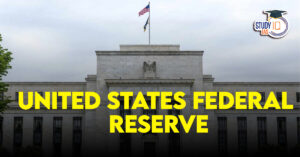Table of Contents
Context: Several cooperative federations of India, including Amul, Nandini, and Aavin, have raised milk prices due to a shortage of fats.
Types of Milk
Milk can be categorized into several types based on its fat content, including:
- Whole milk: This is milk that hasn’t had any of its fat removed, and it typically contains around 3.25% fat.
- Skim milk: This is milk that has had all its fat removed, and it typically contains less than 0.5% fat.
- Full-cream milk: It is similar to whole milk and contains around 3.5% fat.
- Toned milk: This is milk that has been standardized to contain a fixed percentage of fat, which is usually around 3%. It is made by mixing whole milk and skim milk in a specific proportion.
- Double toned milk: This is milk that has an even lower fat content than toned milk, typically around 1.5%. It is made by further diluting toned milk with water and removing more fat.
- Flavoured milk: This is milk that has been flavoured with additives such as chocolate or strawberry.
Current Upsurge of Milk Prices in India
- The prices of Amul’s full-cream milk “Gold” and toned milk “Taaza” were increased from Rs 62-66 and Rs 52-54 respectively.
- India’s second-largest dairy, the Karnataka Cooperative Milk Producers’ Federation had effectively raised the price of its full-cream variant of milk from Rs 50/litre to Rs 55.56/litre.
- The Tamil Nadu Cooperative Milk Producers’ Federation or Aavin had raised the price of its full-cream milk by Rs 12 per litre and replaced standardised milk (intermediate 4.5% fat and 8.5% SNF content) with cow milk (3.5% fat and 8.5% SNF) in certain markets.
- Fat refers to the lipid content in milk.
- SNF (Solid Not Fat) refers to the non-fat components of milk, such as protein, lactose, and minerals.
- Also, the average retail price of milk in India has increased by 12% from a year ago, which is causing concern among consumers and policymakers.
The Reasons behind India’s Rising Milk Prices
- Shortage of Fat: The current price inflation in milk has mainly to do with a shortage of fat.
- It has led dairies to increase full-cream milk prices more or to cut down fat content through the rebranding of existing products.
- There have even been reports of branded ghee and butter disappearing from store shelves.
- Possible factors contributing to shortage of fat:
- Declining buffalo population: Experts have linked the shortage of fats partly to the falling contribution of buffaloes to national milk production. Buffalo milk has an average 7% fat and 9% SNF content, against 3.5% and 8.5% of cows.
- More demand for high-fat milk products: Demand is growing for ghee, ice-cream, khoa, paneer, cheese, and other high-fat milk products. But supply is coming more from crossbreds that give low-fat milk. The mismatch is pushing fat prices higher.
- Export-induced inflation: A more immediate reason for rising fat prices is exports. During 2021-22, India exported over 33,000 tonnes of ghee, butter, and anhydrous milk fat valued at Rs 1,281 crore.
- GST Anomaly: The issue here is that while milk itself is not subject to any Goods and Services Tax (GST), certain milk products such as Skimmed Milk Powder (SMP) and milk fat are taxed at different rates – 5% for SMP and 12% for milk fat.
- Ultimately, this cost is passed on to the consumer, contributing to the upsurge in milk prices.
- Other factors contributing the overall upsurge in milk prices:
- Rise in Animal Feed Prices: The increase in the prices of cereals and rice bran, ingredients used in animal feed, which is discouraging farmers from feeding their cattle sufficiently and is reflected in milk prices that have risen 12%-15% during winter months.
- Adverse weather: Unseasonal rain and heat waves have also contributed to this jump in feed prices.
- Stagnant Production & Rising Demand: India’s milk production remained stagnant in the 2022-23 fiscal while the domestic demand grew by 8-10% in the same period because of a rebound in the post-pandemic demand.
- Disease: Lumpy skin disease, a deadly viral infection, assumed epidemic proportions last year and is estimated to have killed nearly 185,000 cows and buffaloes in eight states.
- Increase in labour cost: Another reason for the increase in milk prices is the increase in the cost of labour. Dairy farming is a labour-intensive activity, and the wages of labourers have been increasing due to inflation and the implementation of minimum wage laws.
- The cost of transportation and storage of milk has also been increasing which has added to the overall cost of production.
Stats IQ: India’s Dairy Sector
- Largest Milk Producer: India is the highest milk producer and ranks 1st in the world contributing 24% of global milk production.
- Milk Producing States in India: Rajasthan (15.05%), Uttar Pradesh (14.93%), Madhya Pradesh (8.6%), Gujarat (7.56%) and Andhra Pradesh (6.97%). They together contribute 53.11% of total Milk production in the country.
- Export: Export of dairy products recorded a growth of 19.45 % as its export rose to $471 Mn in FY 2022-23 till now (April-December 2022) from $395 Mn in April-December 2021 of the last fiscal year.
- Major Export Destinations: Bangladesh, United Arab Emirates, Bahrain, Malaysia, Saudi Arabia and Qatar.
- Import: Imports of Dairy Produce in India increased to 38.86 USD Million in 2022 from 12.40 USD Million in 2021. Imports come from the United Kingdom and Netherlands.
- Milk Production: Milk output in India was 221 million tonnes in 2021-22, up 6.25% from 208 million tonnes in the previous year.
- Livestock Census: As per 20th Livestock Census (2019), the total Livestock population is 536.76 million in India showing an increase of 4.8% over Livestock Census-2012.
- The total Livestock population in rural and urban area is 514.11 million and 22.65 million respectively with percentage share of 95.78% for rural and 4.22% for urban area.
- Total Bovine population (Cattle, Buffalo, Mithun and Yak) was 303.76 million in 2019 which shows an increase of 1.3% over the previous census.


 List of Indo-Pakistan Wars and Conflicts...
List of Indo-Pakistan Wars and Conflicts...
 Daily Quiz 24 April 2025
Daily Quiz 24 April 2025
 United States Federal Reserve (US Fed)
United States Federal Reserve (US Fed)






















